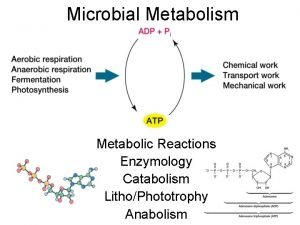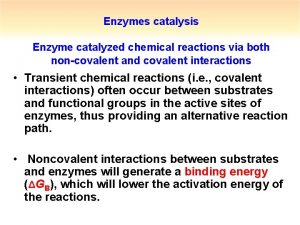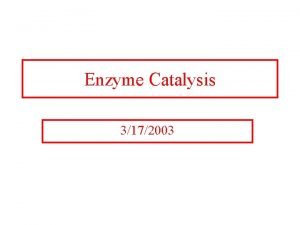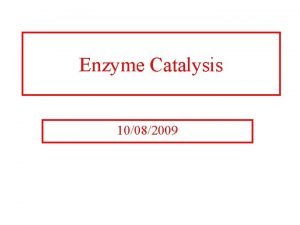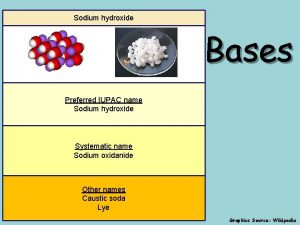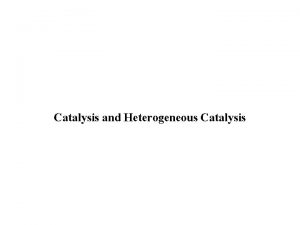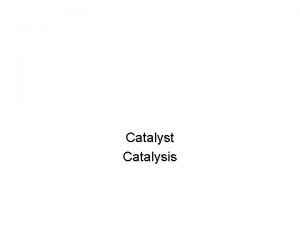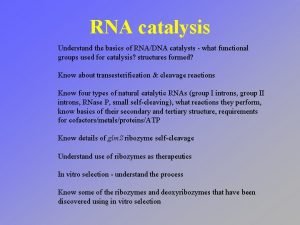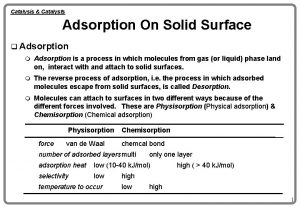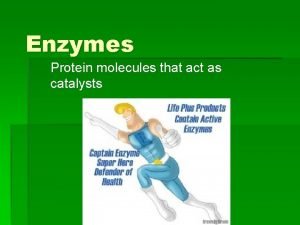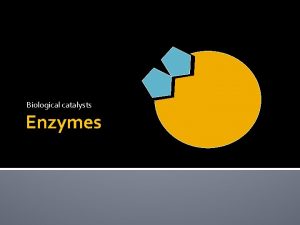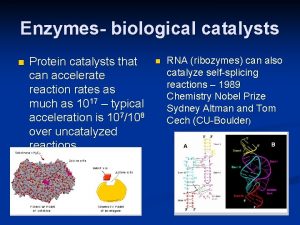Introduction to Catalysis in Industry Catalysts are the






























- Slides: 30


Introduction to Catalysis in Industry Catalysts are the workhorses of chemical transformations in the industry. Approximately 85– 90% of the products of chemical industry are made in catalytic processes. Catalysts are indispensable in. Production of transportation fuels in one of the approximately 440 oil refineries all over the world. Production of bulk and fine chemicals in all branches of chemical industry. Prevention of pollution by avoiding formation of waste (unwanted byproducts). Abatement of pollution in end-of-pipe solutions (automotive and industrial exhaust) A catalyst offers an alternative, energetically favorable mechanism to the noncatalytic reaction, thus enabling processes to be carried out under industrially feasible conditions of pressure and temperature.




Catalysis in Journals The results of research in catalysis are published in a wide range of general and more specialized journals. This reflects the highly multidisciplinary nature of the field. Referring to the different length scales in Fig. 1. 8, research in the microscopicdomain, dealing with the fundamentals of adsorbed molecules and elementary reaction steps is often reported in general journals, such as the Journal of Chemical Physics, the Journal of Physical Chemistry, Physical Chemistry. Chemical Physics, Surface Science, Langmuir and Physical Review, and sometimes even Science and Nature. Also, the specialized Journal of Catalysis and Catalysis Letters publish articles in this area. The mesoscopic domain of real catalysts is mostly covered by the typical catalysis periodicals, such as Applied Catalysis, the Journal of Catalysis, Catalysis Letters, Topics in Catalysis, Catalysis Today, Microporous Materials and Zeolites, although occasionally articles also appear in Journal of Physical Chemistry and Physical Chemistry-Chemical Physics, and many others. The macroscopic domain is largely covered by journals dedicated to chemical engineering: Chemical Engineering Science, Industrial & Engineering Chemistry Research, and the Journal of the American Institute of Chemical Engineers (AICh. E Journal) are some of the best known in this field.





General References to Textbooks in Catalysis M. Bowker, The Basis and Applications of Heterogeneous Catalysis (1998), Oxford University Press, Oxford. J. M. Thomas and W. J. Thomas, Principles and Practice of Heterogeneous Catalysis (1997), VCH, Weinheim. G. Ertl, H. Knzinger and J. Weitkamp (Eds. ), Handbook of Heterogeneous Catalysis (1997), VCH, Weinheim. G. A. Somorjai, Introduction to Surface Chemistry and Catalysis (1994), Wiley, New York. J. A. Moulijn, P. N. W. M. van Leeuwen, R. A. van Santen (Eds. ), Catalysis: an Integrated Approach to Homogeneous, Heterogeneous and Industrial Catalysis (1993), Elsevier, Amsterdam. B. C. Gates, Catalytic Chemistry (1992), Wiley, New York. I. M. Campbell, Catalysis at Surfaces (1988), Chapman & Hall, London. M. Boudart and G. Djega-Mariadassou, Kinetics of Heterogeneous Catalytic Reactions (1984), Princeton University Press, Princeton. J. R. Anderson and M. Boudart, Catalysis,

















Homework

Homework

Homework
 Mikael ferm
Mikael ferm Relational escalation catalysts
Relational escalation catalysts Decao
Decao Apoenzyme
Apoenzyme What is covalent catalysis
What is covalent catalysis What is covalent catalysis
What is covalent catalysis What is covalent catalysis
What is covalent catalysis Specific acid base catalysis
Specific acid base catalysis Specific acid base catalysis
Specific acid base catalysis Specific acid base catalysis
Specific acid base catalysis Enzyme catalyze
Enzyme catalyze Langmuir-hinshelwood mechanism heterogeneous catalysis
Langmuir-hinshelwood mechanism heterogeneous catalysis Erzeng xue
Erzeng xue Energy catalysis and biosynthesis
Energy catalysis and biosynthesis Catalytic combustion
Catalytic combustion Hydroxide catalysis bonding
Hydroxide catalysis bonding Hình ảnh bộ gõ cơ thể búng tay
Hình ảnh bộ gõ cơ thể búng tay Ng-html
Ng-html Bổ thể
Bổ thể Tỉ lệ cơ thể trẻ em
Tỉ lệ cơ thể trẻ em Chó sói
Chó sói Tư thế worms-breton
Tư thế worms-breton Chúa yêu trần thế
Chúa yêu trần thế Môn thể thao bắt đầu bằng chữ đua
Môn thể thao bắt đầu bằng chữ đua Thế nào là hệ số cao nhất
Thế nào là hệ số cao nhất Các châu lục và đại dương trên thế giới
Các châu lục và đại dương trên thế giới Cong thức tính động năng
Cong thức tính động năng Trời xanh đây là của chúng ta thể thơ
Trời xanh đây là của chúng ta thể thơ Cách giải mật thư tọa độ
Cách giải mật thư tọa độ Làm thế nào để 102-1=99
Làm thế nào để 102-1=99 độ dài liên kết
độ dài liên kết



